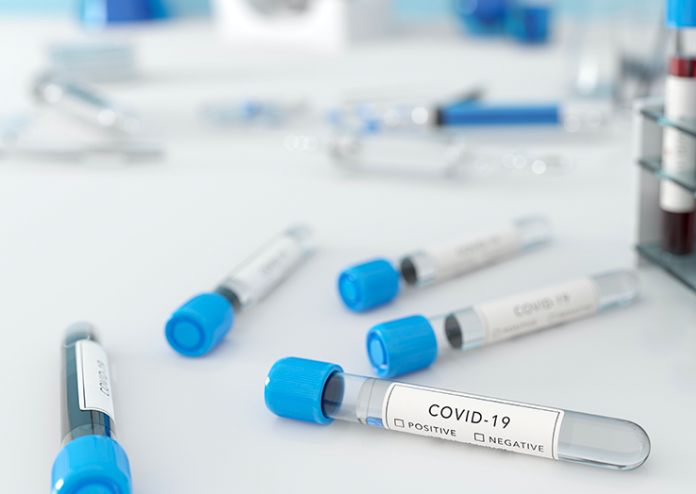When it comes to COVID-19 testing labs, size isn’t everything, according to Alan Thornhill, UK Country Manager at Igenomix and Honorary Professor of Reproductive Genetics at the University of Kent, who spoke to Natalie Broome (MSc student, Kent)
Alan Thornhill, UK Country Manager at Igenomix and Honorary Professor of Reproductive Genetics at the University of Kent discusses with Natalie Broome (MSc student, Kent) how he has expanded a lab focussed on genetic testing in human embryos, to incorporate a COVID-19 PCR testing service.
Since publishing your article, ‘COVID Screening: Let Private Accredited Laboratories Show Their Worth’ (May 2020, Open Access Government), the UK has risen from 40th to 16th country for tests per million population. How has that come about?
Some of the biggest contributors to the improvements in testing capacity are the UK Government’s so-called megalabs. However, a significant flotilla of private and public labs; not least those making up the COVID Testing Network’s (CTN) loose affiliation of highly collaborative ‘repurposed’-labs have made a big difference. Crucially, many of these network labs (like Igenomix) are ISO-accredited and, despite some teething problems, the UK’s testing capacity has increased immensely – something we, as a nation, should be proud of.
What lessons have we learned?
It’s not just about capacity. Indeed, only about 70% of the total capacity is being used today. What’s important is providing a test result to those who need it the most. It’s about delivering the kit, providing clear instructions, and having a decent turnaround time to deliver meaningful actionable results. Our recent work with care homes has revealed plenty of horror stories, what with lost untracked boxes containing hundreds of precious samples, unlabelled samples and results going unreported for weeks. In my world of private testing, you are only as good as your last reported test and we are fully accountable to our customers whoever they might be. The other thing we’ve learned throughout the pandemic is that things change very quickly, and this is equally true in the testing arena!
What about the government’s latest shift away from the gold-standard PCR test towards mass-testing with rapid antigen tests?
Despite the obvious advantages of a cheaper, lab-free, easier to administer test, most experts suggest that the rapid antigen tests aren’t anywhere close to the sensitivity or specificity of PCR tests. The main issue here are the groups of people tested. In some settings, a weaker test or one which can only really identify sick people with a high viral load may be satisfactory. Unfortunately, when a test is needed to identify infections in an asymptomatic population, there may be problems using a less-sensitive test which could provide a false sense of security. Remember the adage: a bad test if worse than no test?
That is not to say that any test is perfect. There are still a number of limitations to PCR testing, but many of them aren’t exclusive to PCR testing. For instance, the timing of sample collection is highly relevant when considering the test choice and what phase of infection the patient is in, the type and method of sample collection (should it be saliva, nose and throat or the ‘gold standard’ nasopharyngeal swab?), dry swab or inactivating medium, sample labelling, transport, processing, sample pooling, off-label test protocol variations, and whether results are generated manually or automatically. Considering these many components of testing from the pre-analytic through to the post-analytic phase is all part of the challenge and, fortunately, is fundamental to how an ISO accredited laboratory works.
What are the differences between using private labs, such as Igenomix compared to a megalab?
Megalabs were created so resources weren’t directed away from the core work of NHS labs; if people don’t get tested for cancer and other diseases, they’re unfortunately going to die of those instead of COVID-19. Ideally, a parallel process of creating megalabs while supporting and scaling up smaller existing labs might have avoided the lag in testing capacity. Moreover, some reported problems relating to health and safety, logistics and turnaround times in lighthouse labs are perhaps to be expected when starting from scratch, in contrast to laboratories already operating under ISO accreditation standards. While Igenomix is by no means operating at the scale of a megalab, one of the things we’re most proud of is that we’ve not changed our values in providing the best care for every patient and client.
Is it relatively easy to repurpose a fertility lab for COVID-19 testing?
Yes, but it’s been challenging in terms of finding extra space, purchasing or acquiring the right equipment and getting hold of key consumables (from the reagents themselves to swabs and plastic tips). Luckily, we were able to rent additional space in our building and could use some of our equipment and expertise we already had to develop a separate lab, so our COVID-19 testing didn’t interfere with the delivery of our usual fertility testing. We’re not set up to take a live virus, as the building we work in is not happy with that. This is one of the reasons we’re not working with pillar 2 testing; because most of the swab types don’t use viral transport medium (which inactivates the virus). The biggest change for us has been adapting to the scale of testing, and this has required us to move further towards automation versus manual for many processes (from extraction to results interpretation).
What about the challenges of reagent and equipment shortages?
If you’re not delivering pillar 2 testing or part of the NHS, it can be challenging to have fast-track access (and the associated discounts) with some equipment and test manufacturers (for example, Thermo Fisher Scientific), even if you’re an existing big customer. In addition, if you intend to scale up massively, there’s likely to be short-term shortages of many test components, and that’s what we’re seeing. One huge highlight for me personally has been the fantastic work of CTN. Together, we are overcoming barriers and finding solutions. It is uplifting to work with helpful, collaborative expert lab leaders in the CTN. More than ever we need that spirit of collaboration.
How would you summarise the current state of affairs?
In terms of test capacity, things have improved by orders of magnitude, but capacity alone is not enough. In an age where you can buy a cheap item from Amazon, which is fully tracked from vendor to doorstep, it is saddening that hundreds of potentially infectious biological samples can go missing with no accountability – likely the result of incompetence, rather than malicious intent. Never have I valued more the importance of the intense scrutiny of an ISO inspection process – the endorsement of ‘competence with intent’.
This article was prepared by Natalie Broome and Professor Darren Griffin.
Please note: This is a commercial profile











